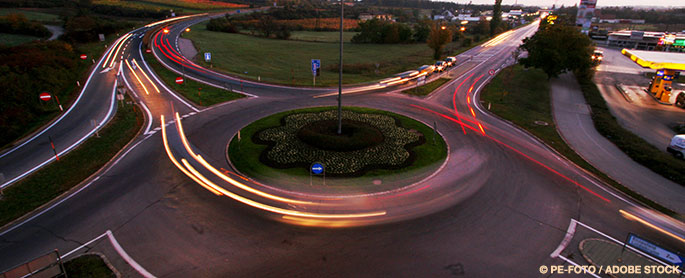
Traffic rotaries, also known as roundabouts, are an alternative solution to traffic lights. The way they work is that traffic feeds into a circle, and drivers exit at the road they want to take. Those outside the circle yield to those inside of it, but a rotary allows for a constant flow of traffic instead of the stop-and-go jerking associated with stop lights and stop signs. However, aside from reducing accidents in intersections according to Roundabouts and Traffic Engineering, these unique road constructions do something else.
They reduce greenhouse gas emissions from traffic.
Can We Engineer a Zero Waste Solution?
Traffic rotaries are a unique, engineering solution that helps us reduce traffic problems, including emissions from vehicles. Because traffic is allowed to flow, instead of constantly grinding to a halt, there is less fuel being expended. Less fuel burned means fewer emissions released into the air.
Now, for an individual traffic rotary, the effect is going to be minimal. Even if that individual roundabout sees a lot of traffic, it isn’t going to be more than a blip on the radar. But as with any other green solution to the problems we’re facing, what if more intersections became rotaries? What if entire towns replaced the majority of their stop lights with rotary intersections? How long would it take before the sheer amount of lowered accidents, combined with the lowered emissions, begins to make a big impact on our world?
What if we all decided to take a hint from Carmel, IN., and use more rotaries, and fewer lights? It wouldn’t eliminate accidents, and it wouldn’t make fuel cleaner to burn, but how many unwanted results could we prevent just by altering the way we engineer our roads?




































































































































 Three Ways to Engage Teams and Clients to Maximize Your Recycling Program Engagement
Three Ways to Engage Teams and Clients to Maximize Your Recycling Program Engagement  How to Integrate Accessibility Into Your Sustainability Planning
How to Integrate Accessibility Into Your Sustainability Planning  Why Park Benches Can Promote Workplace Well-Being
Why Park Benches Can Promote Workplace Well-Being 
